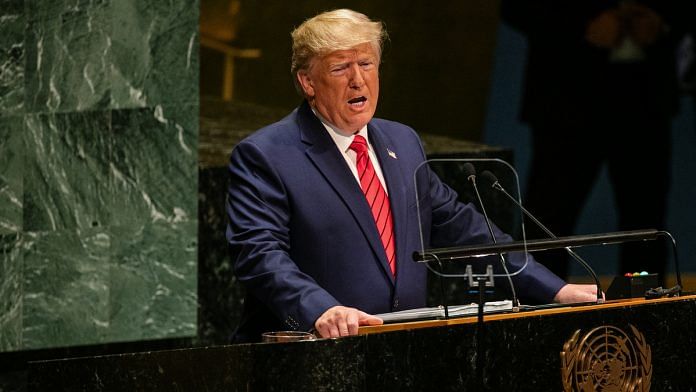New Delhi: The US National Security Council declassified the ‘U.S. Strategic Framework for the Indo-Pacific’ Wednesday, which revealed the Donald Trump administration’s diplomatic strategy in the Indo-Pacific region.
In episode 660 of ‘Cut The Clutter’, ThePrint’s Editor-in-Chief Shekhar Gupta analyses the declassified document and its impact on India, the Quad countries, and China.
“It is a rare occurrence that within two years of such a document having been approved, it has now been released with a few areas redacted…,” said Gupta.
He added that the outgoing Trump administration has recently been on “steroids” with regard to its global strategic policy, and a lot of it is “simply meant to complicate life for [President-elect] Joe Biden”.
The document, approved in February 2018, provided “overarching strategic guidance for implementing the President’s 2017 National Security Strategy within the world’s most populous and economically dynamic region”, noted Gupta.
In 2017, US President Donald Trump had unveiled his National Security Strategy (NSS), which stated that the US must increase its commitment to the Indo-Pacific. It also noted that the most consequential challenge to the US is the growing rivalry between ‘free’ and ‘repressive’ regimes in the region.
Gupta explained the strategic purposes laid out in the framework. The first is to guide the US’ strategic approach to the People’s Republic of China, the second is to prevent or fight back or to block Chinese economic aggression against the rest of the world, especially in the Indo-Pacific region, and the third is to prevent China’s ‘malign’ influence on international organisations.
“It is all directed against China…Maybe some allies of America might be a little taken aback by this, maybe there’ll be voices in India that will say, why are we being dragged into your fight with China, but this is what this document says,” he said.
Also read: Biden pick Kurt Campbell as ‘Indo-Pacific Coordinator’ will reassure Asia allies on China
What does it say about India
The document states the end objectives for various countries in the region, including the Quad countries — US, India, Japan and Australia.
In the document, the US pledged commitment to India’s Security and Growth for All Regions policy.
It also states that it is an American objective that India remains preeminent in South Asia and grows its economy, defence capability and diplomatic power to cooperate with the US and other allies and partners, explained Gupta.
The document notes that the US will seek to enhance India’s border security and secure India’s access to the waters of the river Brahmaputra.
“Remember that river comes out of Tibet in China,” said Gupta, further observing that India has long been worried about the Chinese building a dam near the river.
Also read: US offer to help fight China at LAC aimed to ‘accelerate India’s rise as Major Defense Partner’
Critical views on the document
Gupta noted that there is a degree of skepticism in Indian media regarding the document.
For instance, international security expert Ankit Panda called the document “banal” and said that viewing India as a counterbalance to China is something that the second Bush administration had also done.
The only positive is that India’s interests in the US have been “spared the worst of shocks” as seen with the Obama-Trump transition, added Panda.
Meanwhile, Australian Strategic Policy Institute’s Rory Medcalf viewed the document as “slightly reassuring news” and credited the policy professionals under Trump who worked on the agenda.
Similarly, journalist Anthony Galloway, in the Sydney Morning Herald, commented on the timing of the report arguing that maybe some US officials wanted to be “recognised” for the work they had been doing and to encourage the incoming administration.
Gupta also noted that in the past few years, Australia has disallowed China from investing in the country.
It had blocked a Chinese state-owned company from acquiring a local building contractor on grounds of national security, two days ago.
Similarly in 2016, Australia had blocked a Chinese-led consortium from buying the nation’s largest private land holding, “which would have accounted for 1 per cent of all of Australia”, explained Gupta.
However, he added, around the same time, Australia allowed the Adani Group, an Indian company, to buy a large coal mine system in the country — “a definite strategic imperative”.
Watch the latest episode of CTC here:



